MinExpo 2016 Offers a Glimpse of the Future of Drilling Jobs
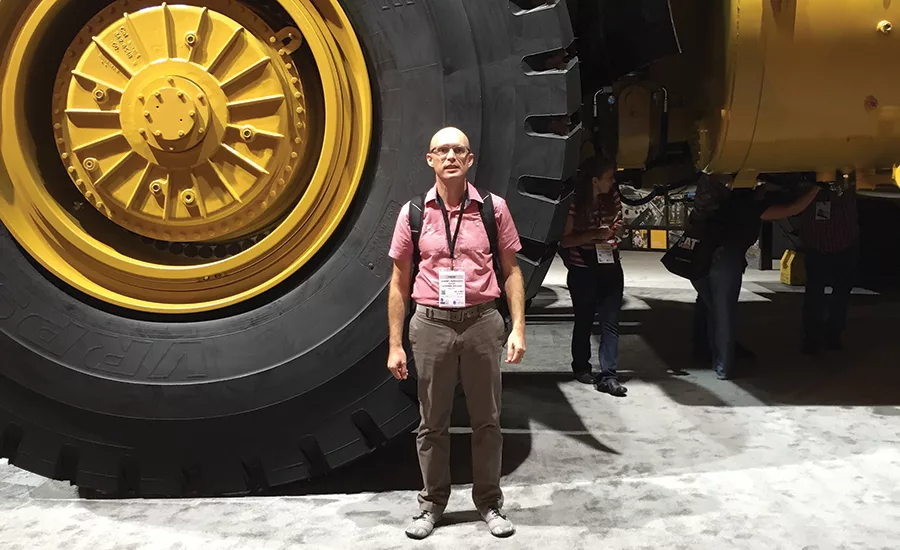
Editor Jeremy Verdusco was able to kick the tires on a few massive dump trucks at MinExpo 2016, plus see what the show offered for drilling contractors. Source: Jeremy Verdusco photos
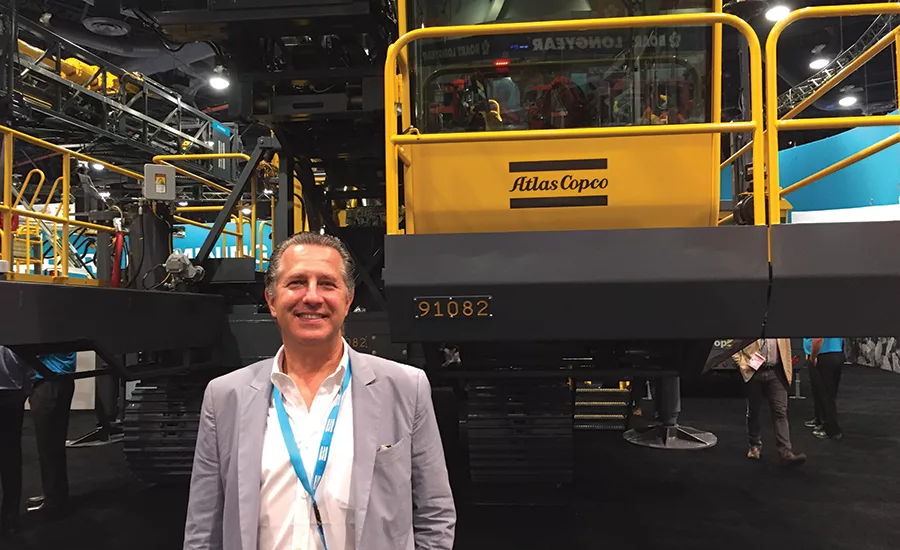
Jose Manuel Sanchez, president of Atlas Copco Drilling Solutions LLC, with one of the company’s latest Pit Viper rotary surface and exploration rigs.
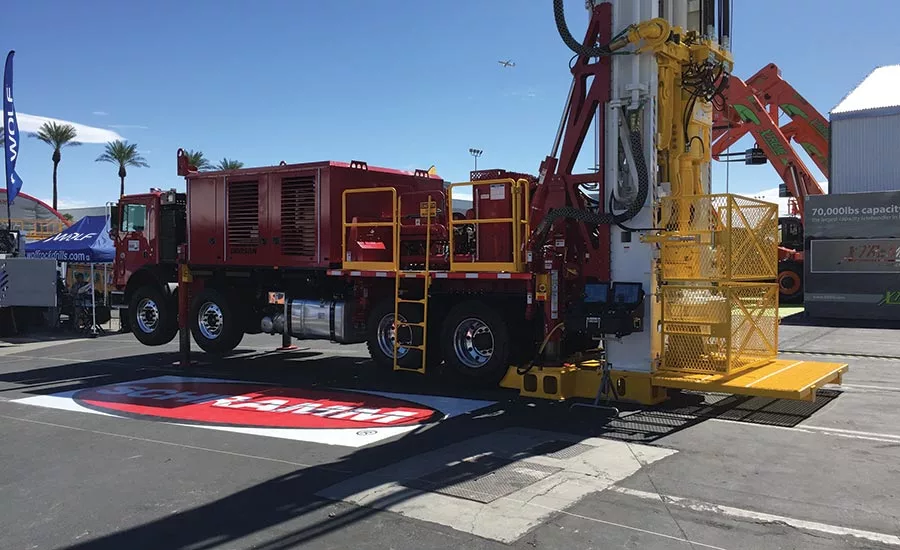
Schramm’s Fury 130 rig at the 2016 MinExpo event.
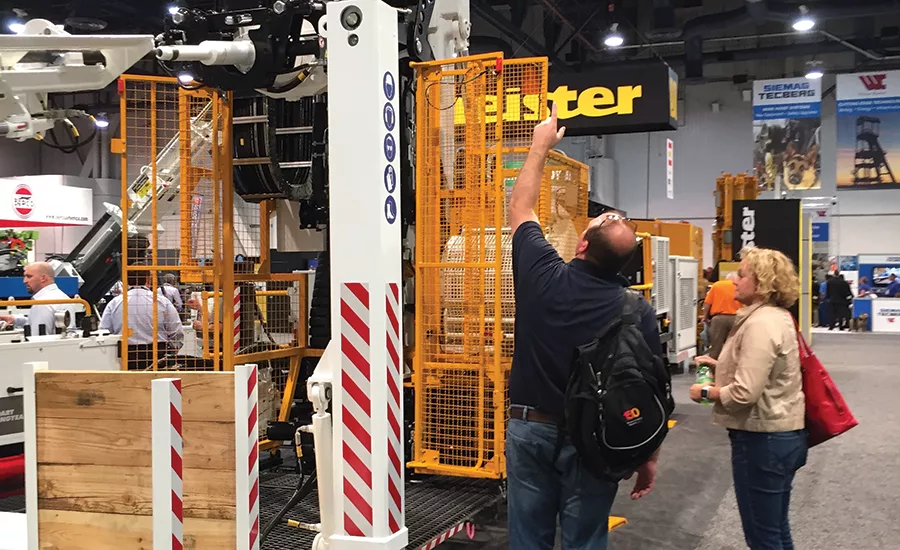
Boart Longyear’s LF160 works with the LF262 Freedom loader to give coring contractors hands-free drilling.
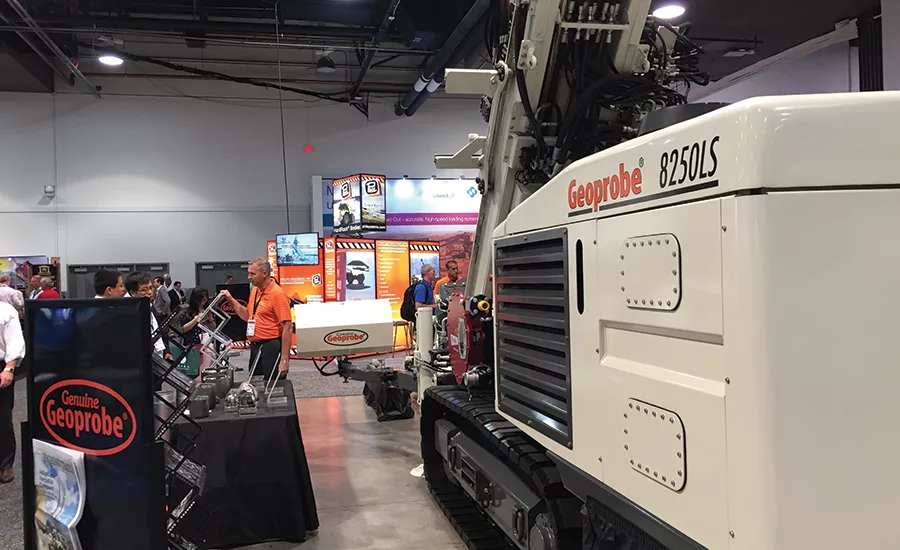
The 8250LS is the latest sonic offering from Geoprobe. Source: Jeremy Verdusco photos
Drilling plays a small part in the big industry of mining. Still, it’s a big enough part that, for National Driller, going to MinExpo makes sense. We get to check out the latest rigs and tooling, which fall right into our wheelhouse. In between, we can kick the tires on a three-story dump truck, which may not interest readers as much, but is still a thrill to see in person.
MinExpo 2016 was held Sept. 26-28 at the Las Vegas Convention Center. More than 1,000 exhibitors and tens of thousands of people attend the event, which happens every four years. It was my first MinExpo (I joined National Driller a couple months after the 2012 event), so I spent a lot of my two days there wearing down the treads of my sneakers as I worked my way among the dozen exhibit halls. Displays featured the latest and greatest, from software to loaders the size of brontosaurs. Among it all was the drilling equipment drillers want to know about.
I spent time talking to several manufacturers about new and upcoming products and about the drilling industry in general, from a mining perspective and otherwise.
Equipment giant Atlas Copco presented a range of rigs, including two new Pit Viper rotary surface and exploration rigs: the PV 231 and PV 275. Together with other equipment shown at MinExpo, they put the emphasis squarely on technology and automation.
“In the open pit side, which is the division I lead, autonomous drilling is a reality,” says Jose Manuel Sanchez, president of Atlas Copco Drilling Solutions LLC. But, he admits that it’s not a reality shared broadly across the mining industry.
“It’s a journey that we need to make together with the customers,” Sanchez says. Atlas Copco tries to help mining companies upgrade at their own pace, automating aspects of their processes until the infrastructure is in place to go fully automated.
“Every one of them will have their own speed,” he says.
The company also unveiled the SmartROC CL, designed to use Atlas Copco’s COPROD top hammer drilling method for hard geological formations in surface mining. “With this kind of drilling method, the drillers get a very good quality hole, but also very fast speed,” says Victor Tapia, president of Surface and Exploration Drilling Division.
Atlas Copco’s display also included a range of other equipment, from remote drilling control stations like the BenchREMOTE — which allows operation of up to three drilling rigs by one operator, to compressors and generators.
In the Silver lot outside, West Chester, Pa.-based manufacturer Schramm gave attendees a first look at their Fury 130 hydraulic rig. The machine went from idea to delivery in an impressive 11 months.
“Everything is configurable, so we can change all the major subsystems to meet the needs of the customer,” says Michael Dynan, vice president for portfolio and strategic development.
Dynan laid out Schramm’s idea of perfect customers for the Fury 130, so named because of its 130,000 pullback capacity.
“The first one is going to be someone working in large diameter water management. … The other customer would be one working in exploration drilling where they’re using reverse circulation techniques.”
The rig features real-time hydraulic response, remote monitoring functionality and Tier-4 compliance. The model on display was bought by Tyson Thomas, president of Idaho’s Thomas Drilling.
“We sought to build a drilling rig to meet our needs for a safer, faster and more cost-competitive machine than what’s on the market today,” says Thomas who bought his first Schramm in 1999. He said the development process for the Fury 130, which he had input on, had been cut in half from previous rigs he’d bought.
The Fury 130 collects hundreds of data points about the drilling process, which contractors can analyze to make smarter decisions about job pricing and driller training.
Schramm is taking orders for the Fury 130 for the first quarter of 2017.
Schramm also talked about a new supply chain partnership with DNOW L.P. Together, the two companies are rolling out the RigPAC, a warehouse in a box the size of a shipping container. It can smooth out tooling and part needs for clusters of rigs working in the same region, and operates like an RFID-enabled vending machine.
Salt Lake City-based manufacturing and services company Boart Longyear rolled out the new LF160 coring rig, designed with exploration drilling customers in mind. The LF160 works in tandem with the LF262 Freedom loader.
“For surface diamond coring, we’ve been able to achieve 100-percent hands-free rod handling,” says Zac Strauss, global product manager for drilling equipment. Together, the LF160 and LF262 reduce the risk of operator hand and back injury by automatically presenting and aligning rods coming in, and effectively isolating, making and breaking joints without damaging anything.
“The ideal target customer for this setup is going to be somebody that requires hands-free rod handling. … Some of the more sophisticated clients out there are requiring the drillers to be further away from any of the risks,” says Strauss.
The basic drill setup for the LF160 builds on other rigs offered by the company, like the LS244. “We reused a lot of that technology and customized it to fit the size of machine here,” Strauss says.
The LF160 is currently available and shipping, Strauss says.
Other highlights from rig manufacturers included:
Sandvik Mining and Rock Technology unveiled the DD422iE development drilling rig, which uses electric power instead of diesel during tramming to eliminate emissions.
In the Center Hall, Geoprobe unveiled its latest, the 8250LS. The new rotary sonic rig takes many of the features from the company’s 8150LS, but adds the capability to run 20-foot tooling.
Foremost, a Canada-based manufacturer, showed off the DR-24HD, a newer rig in the company’s fleet. It adds a higher-torque gearbox and reinforced mast to the DR-24, making it better suited for applications like mine dewatering and municipal water wells.
There was a lot of talk at MinExpo 2016 about a slump — an unusually long period of low commodity prices. But the array of equipment and technology on display showed that companies serving the mining and other drilling industries recognize the challenges contractors face, and want to be there with solutions.
Looking for a reprint of this article?
From high-res PDFs to custom plaques, order your copy today!






